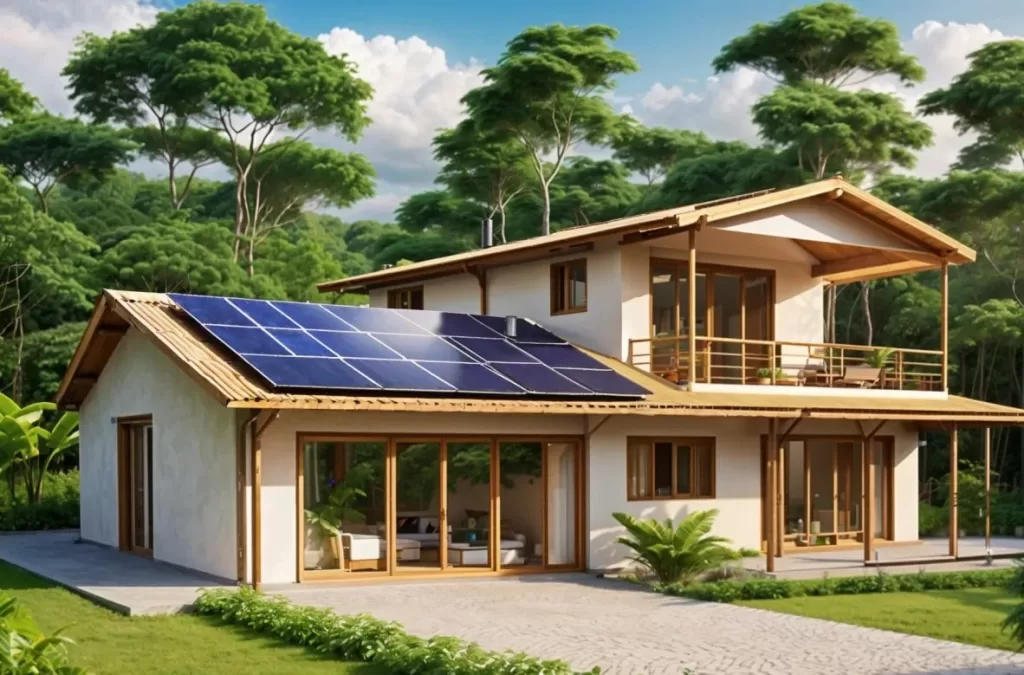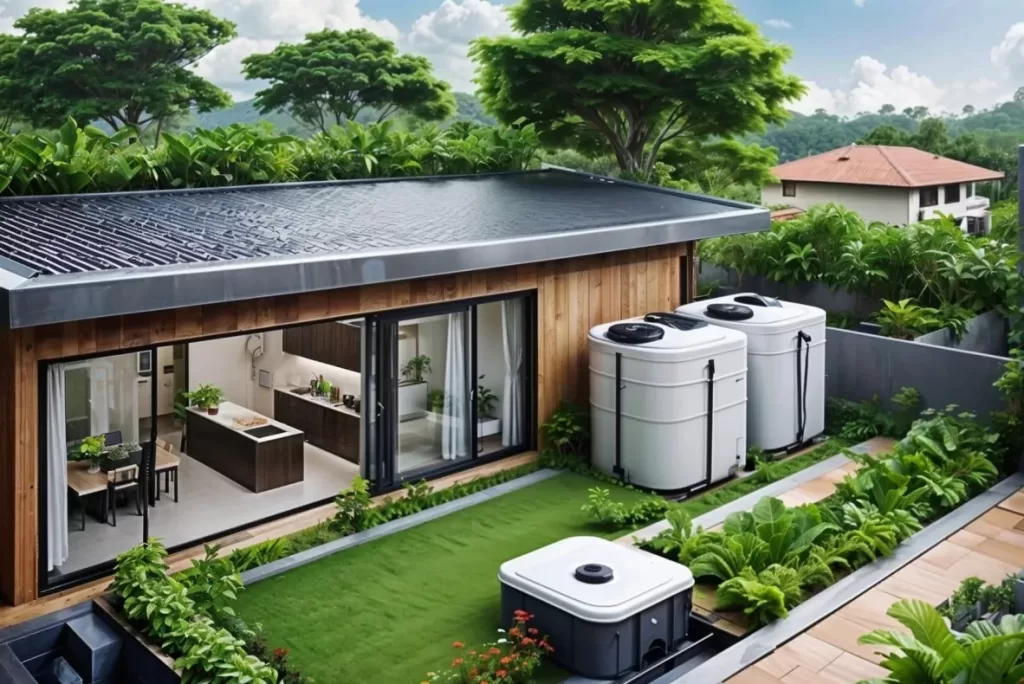Innovative Home Design Solutions for Eco-Conscious Living

In an era where climate change and environmental concerns are at the forefront of global discussions, the need for sustainable living practices has never been more urgent. More and more homeowners are seeking ways to make their living spaces not only comfortable and aesthetically pleasing but also environmentally friendly. This shift towards ecological home design is not just a trend but a necessary step towards a sustainable future. In this blog post, we will explore various innovative home design solutions that cater eco-conscious living, ensuring that your home is both beautiful and beneficial to the planet.
Introduction to Ecological Home Design
Ecological home design is all about creating living spaces that have minimal impact on the environment. This concept goes beyond simply using energy-efficient appliances or recycling materials; it involves a holistic approach that considers the entire lifecycle of the home, from the materials used in construction to the energy sources that power it. The goal is to reduce the carbon footprint of the home while enhancing the quality of life for its inhabitants.
As we delve into the various aspects of ecological home design, it’s important to remember that every choice we make in building and designing our homes has a ripple effect on the environment. Whether you are building a new home or renovating an existing one, these innovative solutions can help you create a space that is both stylish and sustainable.
1. Sustainable Building Materials
The foundation of any ecological home design starts with the materials used in its construction. Traditional building materials like concrete and steel have a significant environmental impact due to their high carbon emissions during production. Fortunately, there are numerous sustainable alternatives available that can significantly reduce your home’s carbon footprint.
Bamboo is one such material that has gained popularity in recent years. It is a fast-growing plant that requires minimal water and pesticides, making it an excellent sustainable resource. Bamboo can be used in flooring, cabinetry, and even structural elements of the home. Another innovative material is recycled steel, which can be used in the construction of the home’s frame. Recycled steel reduces the need for new steel production, which is a major contributor to greenhouse gas emissions.
Rammed earth is another eco-friendly material that has been used for centuries in various cultures around the world. It involves compacting a mixture of earth, gravel, and sometimes cement into a solid wall. This method not only uses natural materials but also provides excellent thermal mass, helping to regulate indoor temperatures and reduce the need for heating and cooling systems.
Eco-friendly insulation options, such as sheep’s wool, cotton, and cellulose (made from recycled paper), are also gaining traction. These materials not only reduce energy consumption by improving the thermal efficiency of the home but also help to improve indoor air quality by avoiding the use of harmful chemicals.
2. Energy-Efficient Systems
One of the key aspects of ecological home design is energy efficiency. The more efficient a home is in its use of energy, the less it relies on fossil fuels, which are a major source of greenhouse gas emissions. Incorporating energy-efficient systems into your home is a crucial step towards creating an eco-friendly living space.
Solar panels are perhaps the most well-known solution for generating renewable energy at home. By harnessing the power of the sun, solar panels can provide a significant portion of a home’s energy needs, reducing reliance on the grid and lowering electricity bills. Advances in solar technology have made it more affordable and efficient, making it an increasingly popular choice for eco-conscious homeowners.
In addition to generating energy, it’s important to consider how that energy is used. Energy-efficient appliances, such as refrigerators, washing machines, and ovens, consume significantly less electricity compared to their traditional counterparts. Look for appliances with the ENERGY STAR label, which indicates that they meet strict energy efficiency guidelines set by the Environmental Protection Agency (EPA).
Smart home systems can further enhance energy efficiency by allowing homeowners to monitor and control their energy usage in real-time. For example, smart thermostats can learn your daily routines and adjust the temperature accordingly, ensuring that energy is not wasted when you are not at home. Similarly, smart lighting systems can be programmed to turn off when not in use, reducing unnecessary energy consumption.
3. Water Conservation Strategies
Water is another precious resource that must be conserved in any ecological home design. With increasing water scarcity in many parts of the world, it’s essential to incorporate water-saving features into your home.
Rainwater harvesting is a simple yet effective way to reduce your reliance on municipal water supplies. By collecting and storing rainwater, you can use it for various purposes such as irrigation, toilet flushing, and even laundry. Installing a rainwater collection system is relatively straightforward and can significantly reduce your water bills while easing the demand on local water resources.
Low-flow fixtures are another important element of water conservation. Faucets, showerheads, and toilets designed to use less water without compromising performance can dramatically reduce the amount of water used in the home. For example, low-flow showerheads can reduce water usage by up to 50% compared to standard models, without sacrificing water pressure.
Greywater recycling is a more advanced water conservation strategy that involves reusing water from sinks, showers, and washing machines for purposes such as irrigation and toilet flushing. By treating and reusing greywater, you can significantly reduce the amount of freshwater needed in your home, making it an excellent option for eco-conscious homeowners.

4. Indoor Air Quality and Natural Ventilation
Maintaining good indoor air quality is crucial for both the health of the occupants and the environment. Traditional homes often rely on chemical-laden products that can release harmful volatile organic compounds (VOCs) into the air, contributing to poor indoor air quality. Ecological home design prioritizes natural materials and ventilation to ensure a healthier living environment.
Natural ventilation is a key component of maintaining good indoor air quality. Designing your home with large windows, skylights, and strategically placed vents allows for the free flow of air, reducing the need for artificial cooling systems. Cross-ventilation, where windows on opposite sides of the home are aligned, can help to create a natural breeze, keeping the home cool during warmer months.
Using low-VOC paints and finishes is another important step in creating a healthy indoor environment. These products emit fewer harmful chemicals compared to traditional paints, making them a safer choice for both your
Green walls and indoor plants are also excellent for improving indoor air quality. Plants naturally filter the air, removing toxins and producing oxygen. Incorporating indoor greenery not only enhances the aesthetics of your home but also contributes to a healthier and more pleasant living space.

Conclusion: Embracing Ecological Home Design for a Sustainable Future
The journey towards creating an ecological home is one of mindful choices and sustainable practices. By incorporating sustainable building materials, energy-efficient systems, water conservation strategies, and indoor air quality improvements, you can design a home that not only meets your needs but also minimizes its impact on the environment.
As the world continues to grapple with the challenges of climate change, every step towards ecological living counts. By embracing innovative home design solutions, you are contributing to a more sustainable future for yourself, your community, and the planet.
Remember, the choices you make today will shape the world of tomorrow. Choose wisely, live sustainably, and enjoy the benefits of an eco-conscious home.
